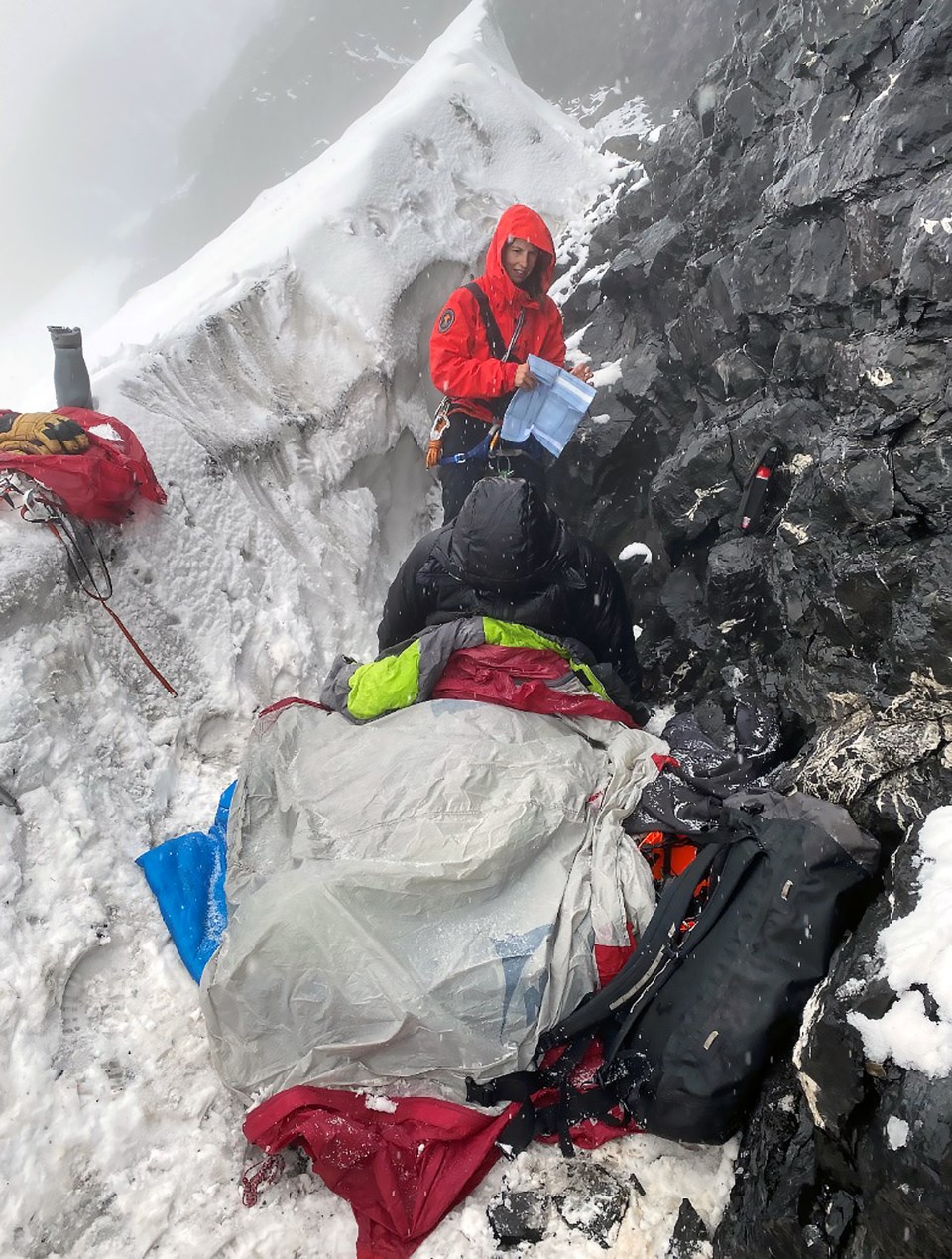KANANASKIS, Alta. – A hiker who fell 50 to 70 metres off the top of Northover Ridge spent a long and uncomfortable stormy night on a glacier with two of his rescuers.
Kananaskis Country Public Safety (KCPS) specialists say a man was hiking the challenging 33-km loop trail in the western part of Kananaskis Country when he fell from the roughly 2,700-metre exposed ridge line.
Suffering from a broken leg, the man believed to be in his 20s or 30s spent close to 22 hours on the mountain from the time he fell to the time rescuers were able to get a big enough break in the weather to heli-sling him to a waiting ambulance at the staging area near Upper Kananaskis Lake.
“It was kind of stormy and either a strong wind gust or a clap of thunder – they’re not really 100 per cent sure which – caused this one guy to fall off as they were walking along the ridge,” said Mike Koppang, KCPS specialist.
“If he had been 50 metres to the left or 50 metres to the right, where the glacier was a little smoother, it’s likely he would have gone the distance and a much larger chance it would have been a fatal fall. Fortunately, where he did fall there was a bit of scoop in the glacier and he stopped.”
The hiking partner was unable to make voice contact, see him or scramble down because the clouds were thick and it was pouring rain. She dumped her backpack on top of the ridge where he fell so rescuers could find the location and she went for help.
Towards Aster Lake, she ran into other hikers with a satellite communication device and was able to raise the alarm.
Rescuers flew by helicopter from Canmore to the site, but couldn’t do a heli-sling operation to get the injured man off the mountain because of deteriorating weather.
“We were actually very lucky. In the first few minutes that we arrived on scene we were able to see him, laying on the glacier just below the moat,” said Koppang.
“We only had a little blip of time to see him and then immediately after that it clouded over and we couldn’t see anything anymore.”
When the weather didn’t improve to allow rescuers to be heli-sling to the site, the team went to Plan B, which involved two public safety specialists walking up to stabilize the injured man from a nearby col.
The bad weather continued so the two rescuers opted to spend the night in the moat at the edge of the glacier with the hiker to wait out the storm.
“We sort of gave it a bit of time to see if the weather would improve, and we could actually heli-sling two staff onto the scene, but it just never improved,” said Koppang.
“So two staff made their way in by foot, in the storm, and found him in the storm and were able to assess his injuries.”
A helicopter dropped gear such as sleeping bags, tents, stoves and clothing to help get everyone safely through the stormy night.
“It was pouring rain, and they were able to get the gear we had left and kind of just bedded down for the night,” said Koppang.
“There was a bunch of hot water bottles, hot tea and food – they had a long and uncomfortable night, but they were dry and warm eventually.”
At about 9 a.m. the next morning, a weather window allowed others in the rescue team to fly in and heli-sling the injured man and the public safety specialists off the mountain.
He was transferred to an ambulance at the staging area near Upper Kananaskis Lake.
Koppang said it is important for backcountry users to carry a satellite communication device.
“Having a way to communicate out when something goes wrong, it’s a really, really good tool,” he said.
“It’s a good thing to carry nowadays; there’s vast parts of Kananaskis Country and national park surrounding that that do not have cell phone service.”
Hikers should also be prepared for changing weather in higher alpine areas and pay attention to the shorter days heading into fall.
“Right now, the days are getting shorter and it’s kind of dark by 9 o’clock,” Koppang said.
“You need to be thinking about that now in terms of planning your timeline on trips. When is it going to be dark? If something goes wrong, what are my options?”



